Taipei Times: Would you share some information about the Lalu Sun Moon Lake’s (日月潭涵碧樓酒店) operations last year?
Stanley Cheong (張昌權): Occupancy rates last year averaged 70 percent, representing a high single-digit increase from 2016. For this year, we are looking at a 10 percent increase. The goal is achievable, as we only have 96 guestrooms. Daily room rates hovered between NT$15,000 and NT$16,000 last year, about the same as in 2016.
We have already raised the room rates by about 5 percent for this year. My rationale for the adjustment was that the Lalu is targeting an upscale market. The focus allows us to concentrate on providing luxury elements to give our guests the unique Lalu experience. The strategy gives us confidence about rate hikes amid economic improvement. An upscale lifestyle is something that not everybody can afford. In my view, an upscale lifestyle equals luxury.
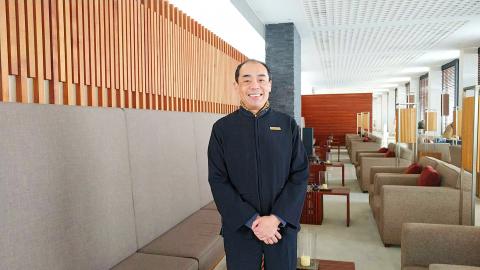
Photo: Crystal Hsu, Taipei Times
TT: The Fleur de Chine Hotel (雲品溫泉酒店), the Wen Wan Resort Sun Moon Lake (日月行館) and other properties nearby all highlight top-quality and personalized service. How has the Lalu managed to differentiate itself over the years?
Cheong: Every hotel has its own specialty. The Fleur de Chine is more family-oriented and the Wen Wan is thriving on its own appeal. The Lalu Sun Moon Lake aims to create memorable moments for all its guests. It has been here for 16 years with a very good reputation.
Although every luxury hotel aims to offer the best service, the Lalu promises its guests something special. Hotel chains tout their own brands and standards, which sets the Lalu apart from those properties. Our stable business, which increases by the year, proves to our guests that we are different and successful. Because of the emphasis on service, the Lalu keeps a very high staff-to-guest ratio, with 270 employees serving 96 guestrooms.
I do not support using a cost-down strategy when it comes to cost efficiency. For me, a cost-down strategy is the wrong approach. Rather, it has more to do with managing costs.
TT: How does the decline in Chinese tourists affect business at the Lalu and in the Sun Moon Lake area as a whole?
Cheong: We always prepare ourselves beforehand. The number of Chinese tourists has declined over the past two years due to reasons beyond our control. Many budget hotels in the Sun Moon Lake area are suffering because they cater to Chinese tourists. All Chinese tourist groups want to see Sun Moon Lake in Nantou, Alishan (阿里山) in Chaiyi and Taroko Gorge (太魯閣峽谷) in Hualien. The Lalu has remained resilient because it does not depend on Chinese tourist groups.
It is not wise to put all one’s eggs in the same basket and volatility is common in the hotel market. As what is happening cannot be undone, hoteliers should turn their attention elsewhere. We have capable sales representatives to help promote the Lalu in the major cities of Japan and South Korea and other Asian nations.
TT: Does the government’s New Southbound Policy lend a helping hand?
Cheong: We always look for emerging and new markets. The situation is improving as Taiwan’s tourism authorities are tapping new markets. Tourists from Southeast Asia have increased in recent years. Tourists from Singapore and Indonesia have seen double-digit increases because their economies are picking up steam, as are the Philippines and Vietnam. A growing number of people in those countries have money to spend and want to experience the luxury lifestyle. That suggests business opportunities for local hotels.
In addition, China Airlines now offers direct flights from Dubai, the heart between the world’s East and West. The service will bring more people to Taiwan. Hotels in Taiwan must go out and woo new customers.
TT: Would you share the Lalu’s client profile?
Cheong: We have quite a diversified clientele. Most guests are between 35 and 50 years old. People in their 20s are likely to prefer the W Hotel because they like fashion, parties and excitement. Lalu customers are mainly corporate executives who like to stay away from the hustle and bustle of the city, and appreciate the serene beauty of nature.
Many say hotels in the Sun Moon Lake area are expensive, but it is a very beautiful tourist attraction. Daily room rates are likely to average about NT$17,000 this year.
More than 60 percent of our guests are Taiwanese. We have visitors from Taipei, New Taipei City, Tainan and Taichung, and from different sectors. More and more people in technology sectors are making money and helping to boost the Lalu’s occupancy. We also have a large number of repeat guests.
Domestic tourism is strong for a small nation like Taiwan. The remaining clients come from Japan, Hong Kong, China and other places.
TT: How do food and beverage contribute to the Lalu’s revenue?
Cheong: Food and beverage (F&B) business accounts for 30 to 35 percent of our sales. Its contribution is likely to stay at a similar level due to our relatively modest capacity. We host many boutique weddings.
Hotels in major cities tend to have strong F&B sales. For instance, the Regent Taipei has the biggest F&B business in Taiwan because of its large restaurant facilities. The Lalu Sun Moon Lake is a resort and there would be a big problem if its F&B business generated 60 percent of its revenue.
Our afternoon tea is good, our spa facility is the most beautiful in Taiwan and we have a yoga master to help guests pursue physical and spiritual well-being.
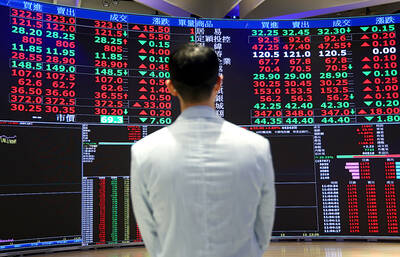
HEAVYWEIGHT: The TAIEX ended up 382.67 points, with about 280 of those points contributed by TSMC shares alone, which rose 2.56 percent to close at NT$1,400 Shares in Taiwan broke records at the end of yesterday’s session after contract chipmaker Taiwan Semiconductor Manufacturing Co (TSMC, 台積電) hit a fresh closing-high amid enthusiasm toward artificial intelligence (AI) development, dealers said. The TAIEX ended up 382.67 points, or 1.45 percent, at the day’s high of 26,761.06. Turnover totaled NT$463.09 billion (US$15.22 billion). “The local main board has repeatedly hit new closing highs in the past few sessions as investors continued to embrace high hopes about AI applications, taking cues from a strong showing in shares of US-based AI chip designer Nvidia Corp,” Hua Nan Securities Co (華南永昌證券) analyst Kevin Su
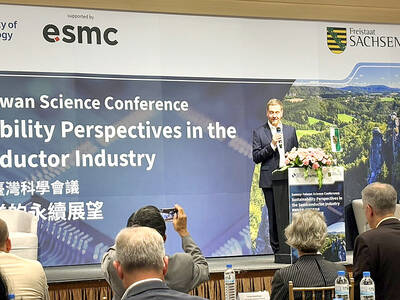
Conferences are meant to bring young people from different countries together to tackle the defining challenges of the century, Saxony Minister-President Michael Kretschmer said yesterday in Taipei, adding that Taiwan and Saxony share similar histories of nurturing talent and engineers. Kretschmer was speaking at the first-ever Saxony-Taiwan Science Conference, a forum aimed at deepening cooperation in the semiconductor and electronics sectors. At the opening ceremony, Kretschmer said the one-day event was a continuation of a series of similar conferences held in Dresden, the capital of the German state of Saxony, where Taiwan Semiconductor Manufacturing Co (TSMC, 台積電) is building a wafer
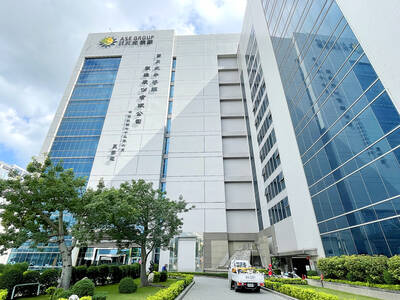
EXPANSION: The investment came as ASE in July told investors it would accelerate capacity growth to mitigate supply issues, and would boost spending by 16 percent ASE Technology Holding Co (ASE, 日月光投控), the world’s biggest chip assembly and testing service provider, yesterday said it is investing NT$17.6 billion (US$578.6 million) to build a new advanced chip packaging facility in Kaohsiung to cope with fast-growing demand from artificial intelligence (AI), high-performance-computing (HPC) and automotive applications. The new fab, called K18B, is to commence operation in the first quarter of 2028, offering chip-on-wafer-on-substrate (CoWoS) chip packaging and final testing services, ASE said in a statement. The fab is to create 2,000 new jobs upon its completion, ASE said. A wide spectrum of system-level chip packaging technologies would be available at
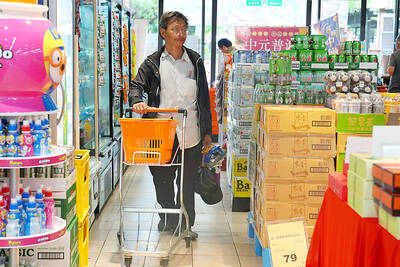
STOCK GAINS: The headline consumer confidence index rose 1.38 points from August, driven almost entirely by a surge in the stock investment subindex Taiwan’s consumer confidence index (CCI) climbed to a four-month high of 64.69 last month, buoyed by stock market gains fueled by artificial intelligence (AI) demand, even as sentiment toward jobs, household finances and housing weakened, National Central University (NCU) said yesterday. The headline index rose 1.38 points from August, driven almost entirely by a surge in the stock investment subindex, which jumped 20.48 points to 51.68 — the steepest monthly gain among the six CCI components. The other five subindexes all declined. “The AI boom has sparked strong demand for Taiwan’s electronics and pushed the local bourse to record highs,” NCU Research